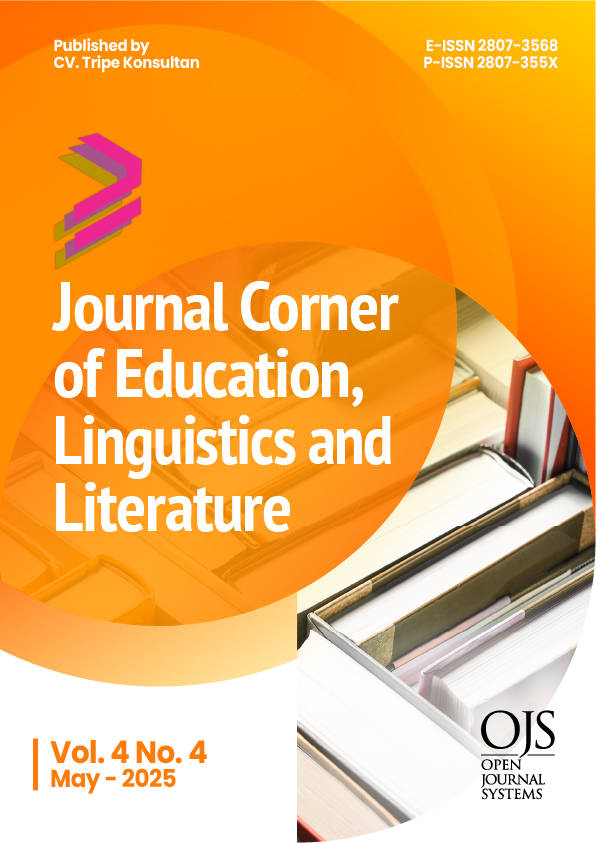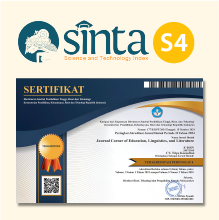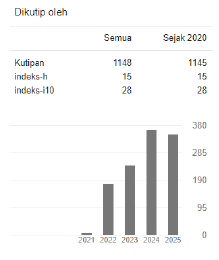The Symbiotic Sisterhood: Analyzing Rituals of Shared Grief in “Midsommar”
 https://doi.org/10.54012/jcell.v4i4.486
https://doi.org/10.54012/jcell.v4i4.486
 Abstract views: 394
Abstract views: 394
 PDF downloads: 180
PDF downloads: 180
Keywords:
Rituals, Symbiotic Sisterhood, Midsommar, Film, Popular CultureAbstract
This research explored the portrayal of shared grief and communal healing in Ari Aster’s film “Midsommar”, focusing on the “Harga” community’s rituals through the lenses of Emile Durkheim’s functionalism and Ferdinand de Saussure’s visual-semiotic theory. The research investigates how these rituals foster a “symbiotic sisterhood” and facilitate the protagonist Dani’s transformation from isolation to belonging. Using qualitative visual-semiotic analysis, the study decodes the film’s symbolic imagery, communal ceremonies, and structured cultural practices. The findings reveal that the Harga's ritualistic expressions of grief—such as the Attestupa and communal crying—serve not only as mechanisms for emotional release but also reinforce social cohesion, mirroring Durkheim’s theory of collective effervescence and organic solidarity. Dani’s participation in these rites catalyzes her psychological recovery from trauma, positioning the Harga women as a therapeutic support system. The study concludes that “Midsommar” subverts traditional Western notions of solitary mourning by presenting grief as a collective, functional force that forges identity, solidarity, and empowerment within a closed communal structure. This analysis contributes to broader discussions on how horror films visualize trauma, ritual, and gendered communal bonds in popular culture.
Downloads
References
Chandler, D. (2017). Semiotics: The Basics (3rd ed.). Routledge.
Durkheim, E. (1893). The Division of Labor in Society. Free Press.
Durkheim, E. (1912). The Elementary Forms of Religious Life. Free Press.
Goldman, R. L. (2019). Traumatized Characters in Traumatized Environments: A Look at Repression and Horror. https://scholarship.claremont.edu/scripps_theses
Goldstein, J. (2020). Therapeutic Rituals: Analyzing the Hårga’s Communal Grief in Midsommar. Modern Psychologic.
Heller-Nicholas, A. (2020). Ritual, Community, and the Carnival in Ari Aster’s Midsommar.
Mambetaliyevna, U. G. (2024). Influence of Popular Culture on The Worldview of Young People. American Journal of Interdisciplinary Research and Development, 28.
Marriott, J. (2019). Midsommar: Community and the Individual. British Film Institute.
Martin, G. N. (2019). (Why) Do You Like Scary Movies? A Review of the Empirical Research on Psychological Responses to Horror Films. Frontiers in Psychology.
McDougall, K. (2019). Midsommar: Trauma and Ritual in Ari Aster’s Latest Horror Masterpiece.
Rudloff, M., & Kjaerboe, R. (2022). The Legacy and Future of Saussurean Semiology in the Study of Art and Visual Communication. In Language and Semiotic Studies (Vol. 8, Issue 1).
Saussure, F. de. (1983). Course in General Linguistics (C. Bally & A. Sechehaye, Eds.). Duckworth.
Schultz, D. G. (2020). “She Is Finally Free”: An Analysis of Women’s Pathologized Oppression and the Reclamation of the Abject in "The Yellow Wallpaper " and Midsommar.
Smith, A. (2019). Midsommar: A Journey from Isolation to Integration. Film Critique Journal.
Sonat, İ. O. (2025). “As Hårga takes, so Hårga also gives”: Approaching Trauma through the Lens of Carnivalesque in Ari Aster’s Midsommar. In Overtones Ege Journal of English Studies (Vol. 4).
Sutton, D. (2022). The Horror/Beauty of the Harga: Midsommar as Western Imaginary of a Screen-Free Life. Visual Anthropology, 35, 448–468.
Thomas, M. (2020). Grieving Together: Communal Mourning in Horror Films. Journal of Film and Emotion, 12, 45–62.
Thompson, J. (2021). Ritual and Renewal in Midsommar: The May Queen and Communal Healing. Journal of Film Studies.
Williams, R. (2020). The Role of Communal Crying in Midsommar: A Therapeutic Release. Cinema and Psychology Review.
Downloads
Published
How to Cite
Issue
Section
License
Copyright (c) 2025 Mutiara Ramadhania

This work is licensed under a Creative Commons Attribution-ShareAlike 4.0 International License.
All articles published in the Journal Corner of Education, Linguistics, and Literature are licensed under the Creative Commons Attribution-ShareAlike License (CC BY-SA).

















